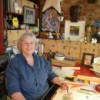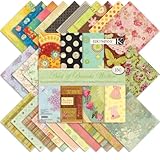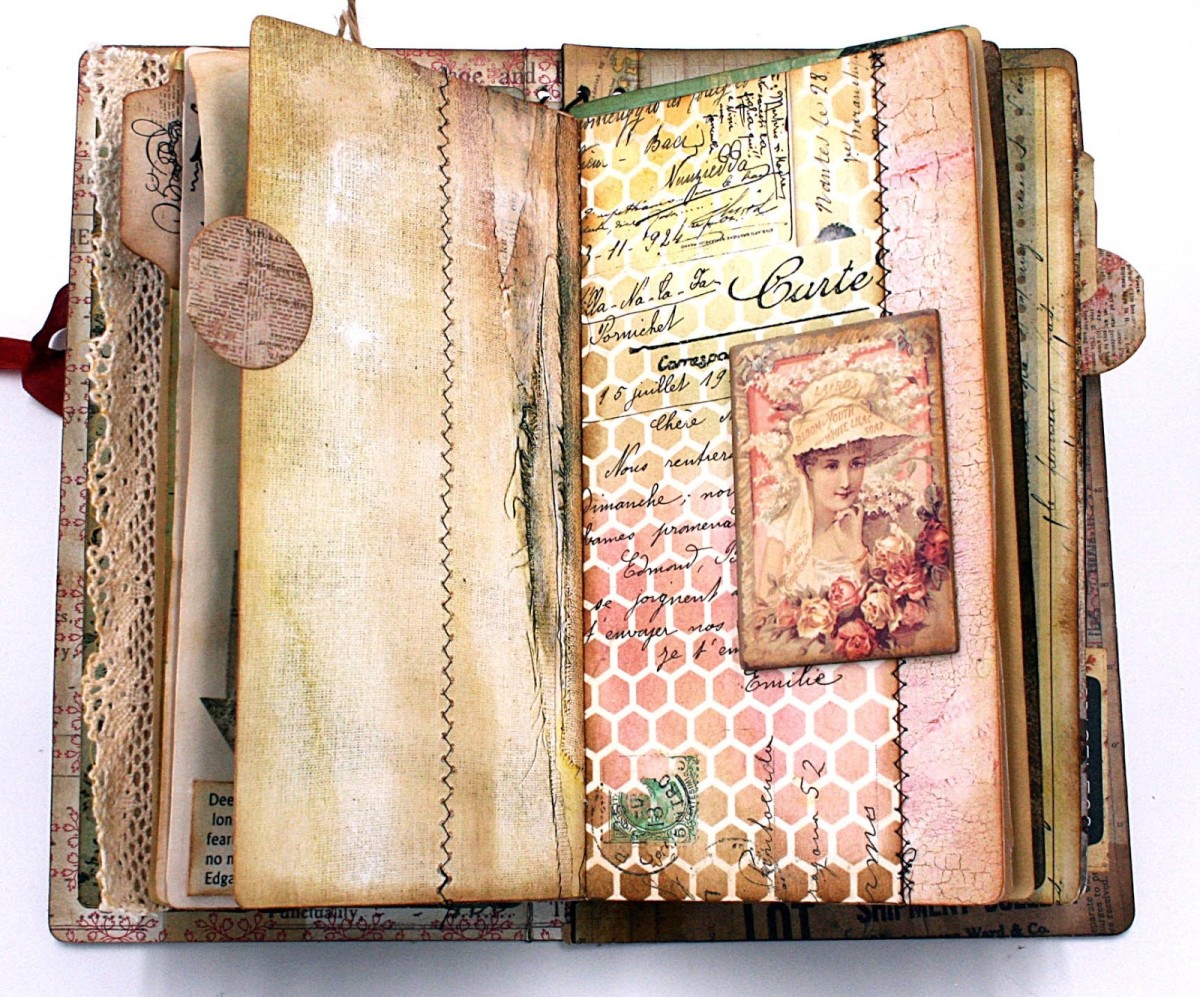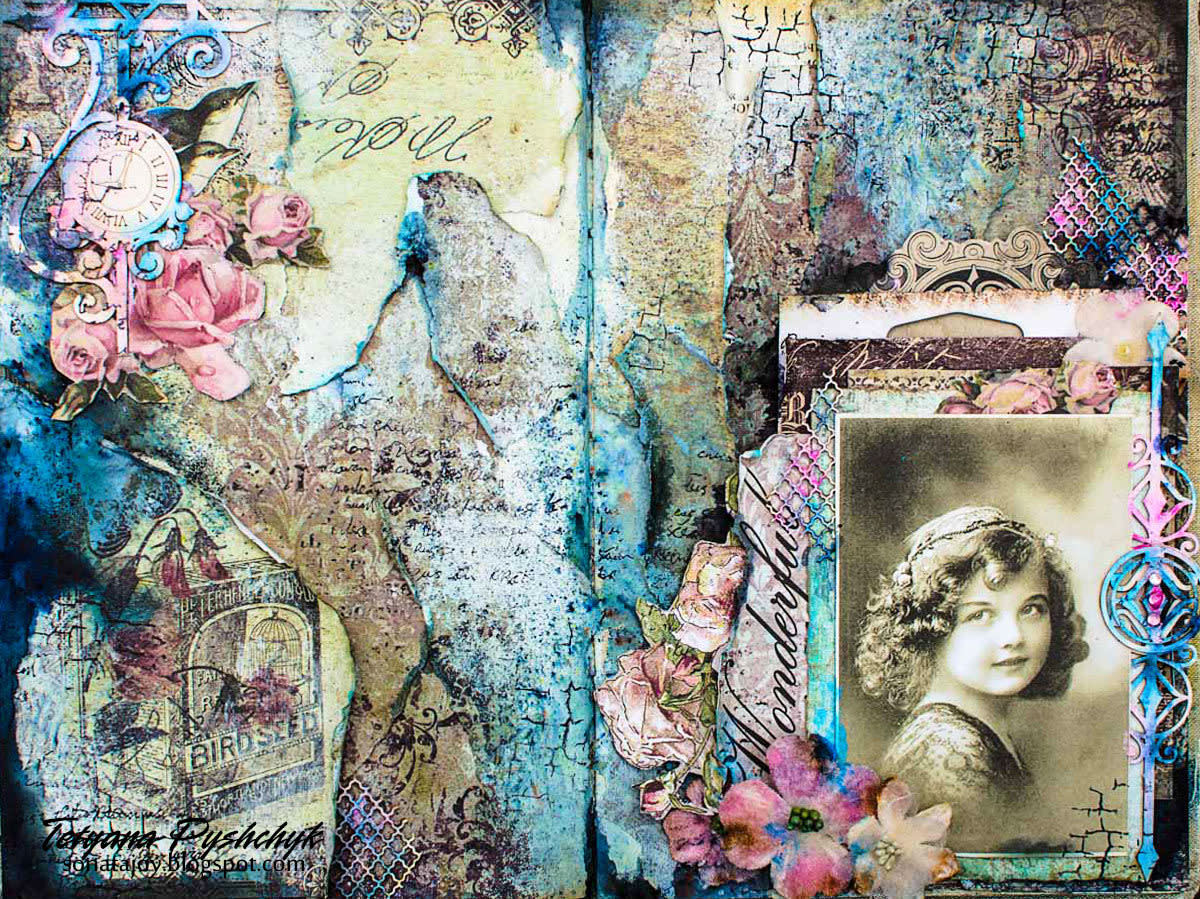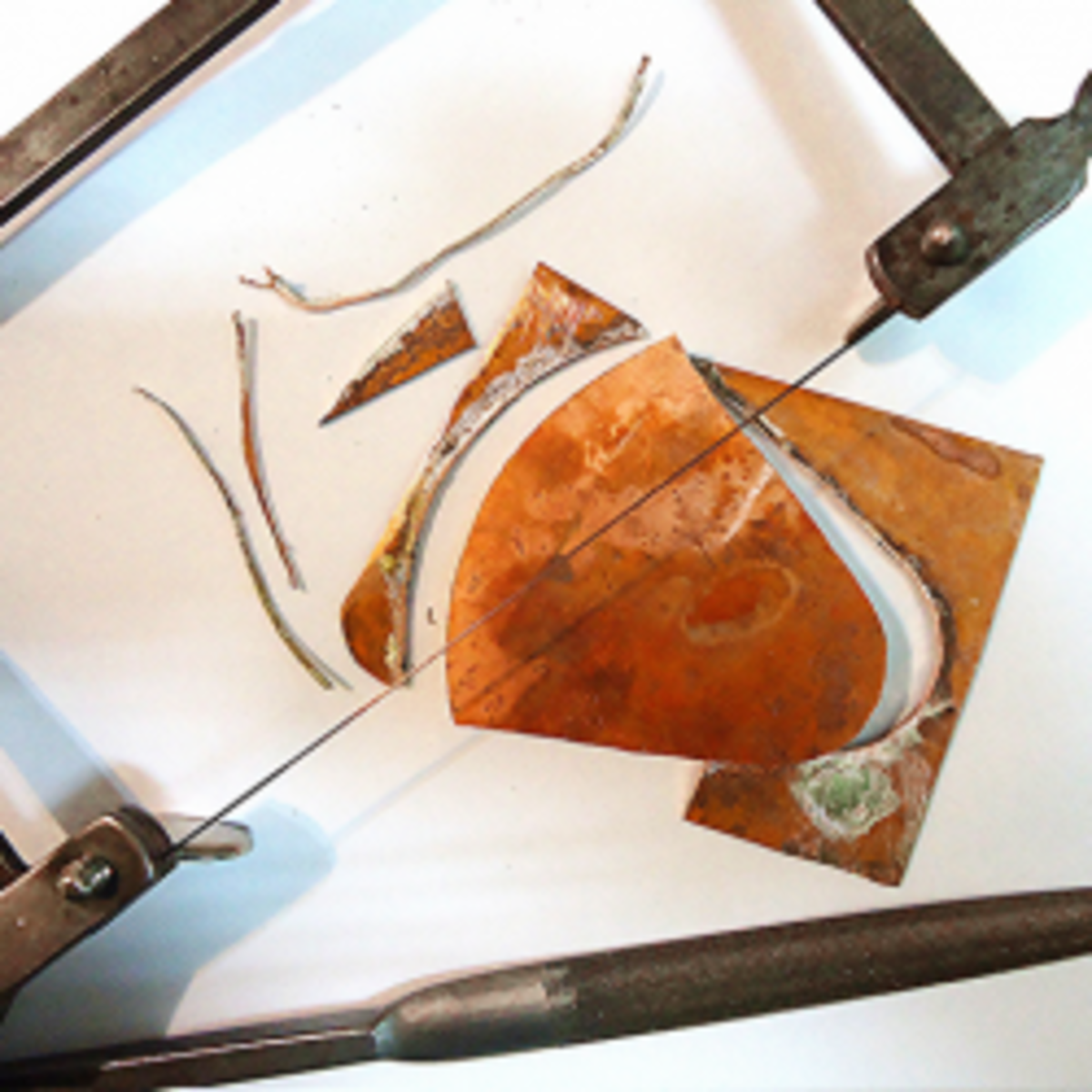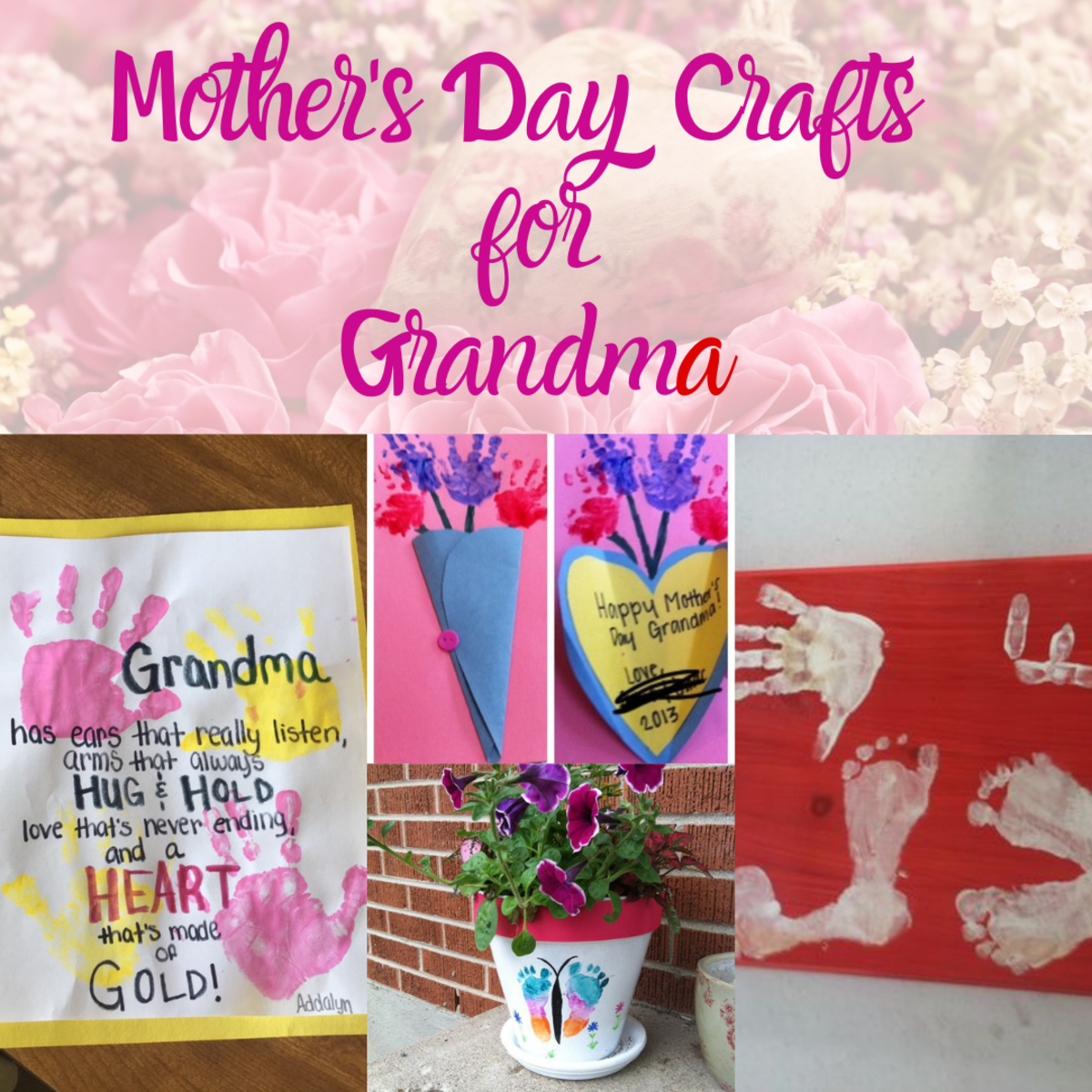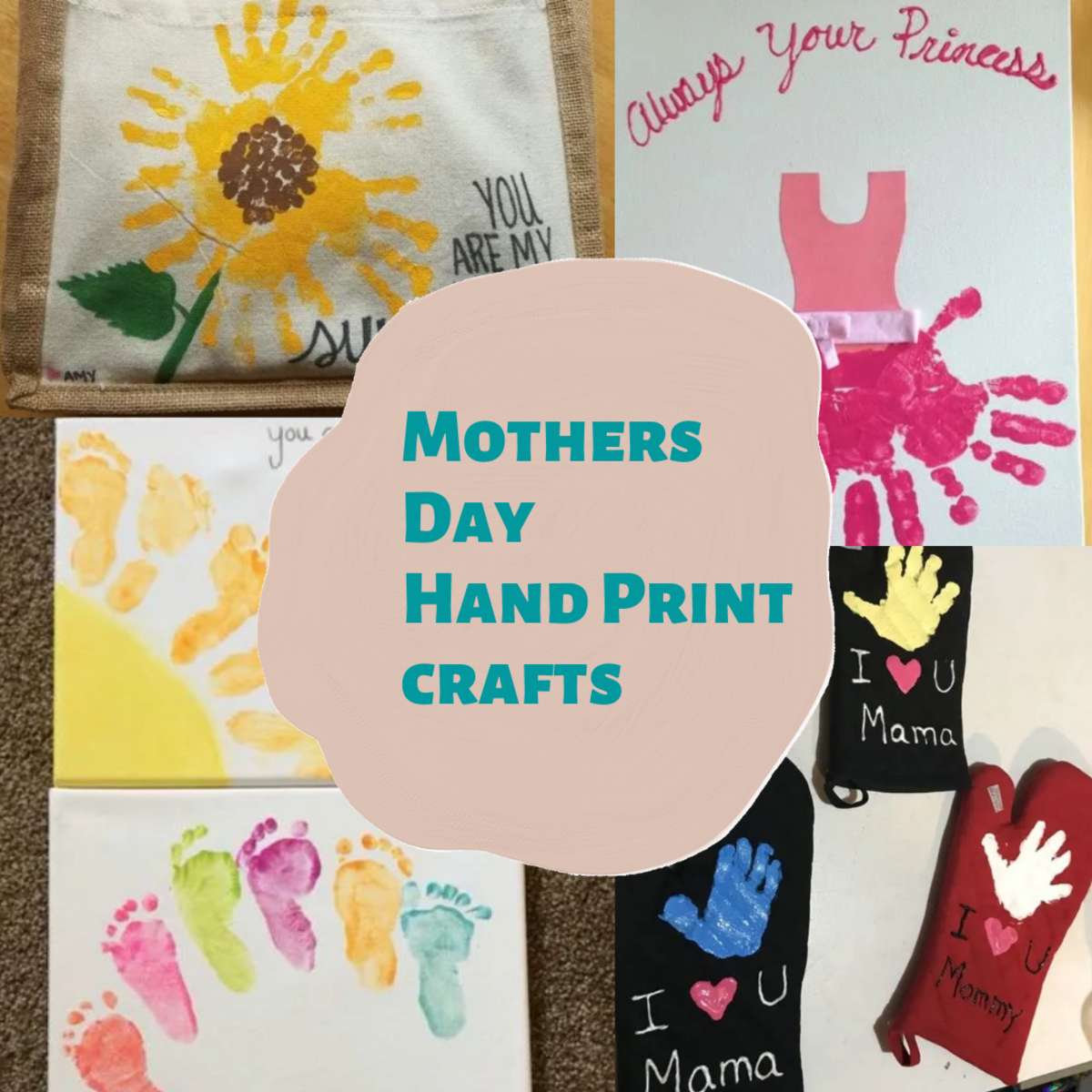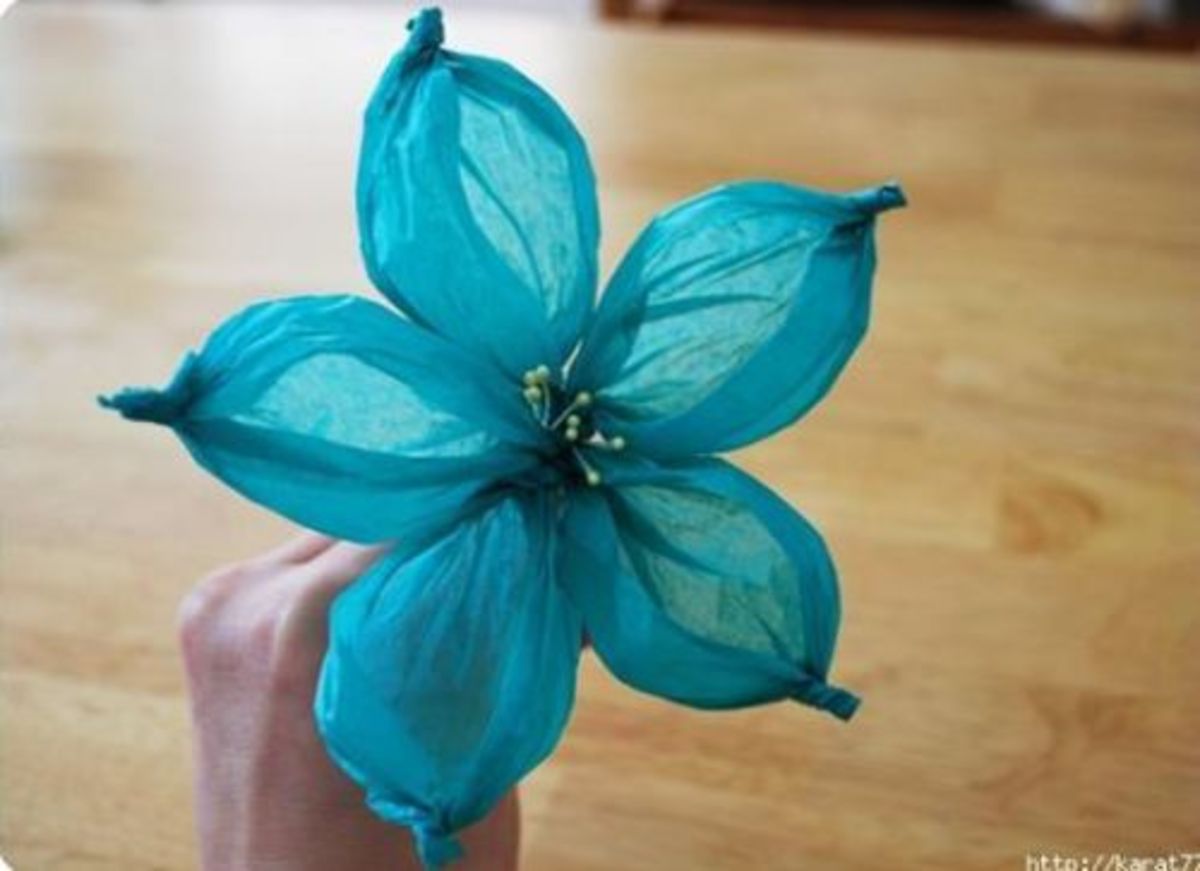Making Collage Jewelry

Combine Paper Craft with Beads, Findings, and Imagination for Unique Collage-Art Jewelry
The technique of paper collage can add one-of-a-kind design to jewelry design.
Create wearable art collages!
Think of this as the miniature version of the art form developed by Picasso, Braque, and Romare Beardon... Like the art of painting miniature portraits on ivory compared to full-length portraits on canvas. This style of jewelry-making is collage writ small.
Plus the fun of getting to work with jewels, beads, findings, and "found" jewelry settings.
Like those ivory miniatures, these mini-collages can be works of art using more precious materials than can be afforded for their bigger cousins.
As I develop more examples - particularly pieces using beads and other findings - I'll add photos. (I have a steampunkish piece I'll show when it's done.) Unless otherwise noted, all jewelry here is by the author (copyrighted of course) and is here only as an example of one possible way to approach the making of collage jewelry.
You'll soon develop your own methods and style! Have fun.
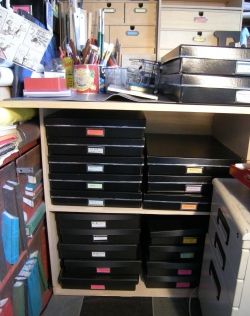
Collecting Collage Material
Papers and Images
The raw materials for collage are all around - in newspapers, magazines, decorative and mundane papers and wrappers, plus any sort of ephemeral paper goods like brochures, catalogs, or fliers.
But it takes time to go through all that!
What I do is collect the raw sources - old magazines etc. - then go through them when I have a little time, cutting or tearing out anything that seems interesting, that seems as if it might spark ideas or that I just like to look at. This includes both color and texture pieces and specific images.
Then I sort these gatherings into two rough piles: Big Stuff and Little Stuff. Little Stuff is whatever seems small and yet distinct enough to be potentially interesting for use in jewelry. Big Stuff gets saved for larger format collages.
BIG STUFF: If you're interested in collage in general... Because these scraps are bulkier to sort though, I subdivide them into Animal, Vegetable, and Mineral (just like in the kids' game). Funny, so I remember it. When I'm working on a collage I may suspect only enough about the developing themes of a composition to guess that the next image I want should be a tree (Vegetable), a person (Animal, in a separate, pretty full box), or maybe a texture (Mineral - in my system all abstract things go under Mineral).
LITTLE STUFF: Jewelry-sized papers only get subdivided into Background (which means either texture or pure color) or Images. These scraps are much easier and faster to paw through, so don't need further sorting.
I keep most of my papers in sturdy shallow boxes that are about 11" x 17" in size. Any bigger container and I start to lose and overlook what I looking for. In the photo you can see the cabinets where I store these boxes - under the counter top that acts as a lay-out area by my drafting board. If I do collage at my board, they're right at hand; if I decide to set up a collage workstation elsewhere, they're easy to carry. In fact, my best jewelry clippings live in a sturdy cardboard suitcase with a handle, ready to go!
Fun Papers
Just a few fun choices for background papers...
Great Collage Storage Box
This box is designed for scrapbooking - specifically for papers and supplies. Note how shallow it is? Easier finding stuff! It's sturdily made in five colors with a coolo metal nameplate (I love those and they're handy too), and it's made from acid free material (in case of long term storage) which means it's archival and photo safe, acid, lignin and PVC Free.
Not quite my preferred 11" x 17" size, but it measures 14 3/4 inch by 13 inch by 3 3/4 inch, which is pretty useful. And cheaper than the ridiculously expensive, bigger ones i had to have because of my drawing sizes.
More Paper Storage
Some really nice options for organizing all the paper needed for collage.
Let's face it - it's a mess. So you'll need ways both to sort and to just flat CONTROL all those stray scraps and clippings. Plus (and this is a BIG plus!) the colored drawers lend themselves beautifully to color coordinated storage/filing... red papers in red drawers etc. Just think how easy it'd be TO FIND THINGS!

"Salle" Pendant
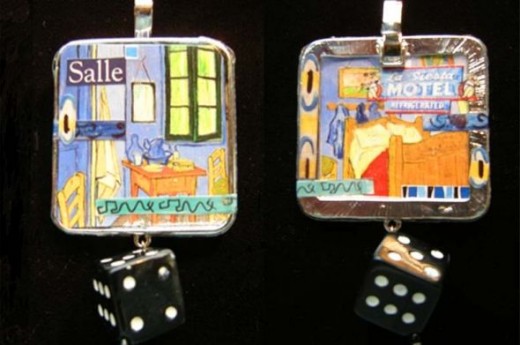
This collage pendant shows why it helps to have a fund of saved images and papers... it's made from maybe half a dozen different images, collected over ten years. The most obvious is Van Gogh's famous painting of his bedroom, but there are also snippets of a vintage motel sign, street art, bits of mosaic, and random magazine words.
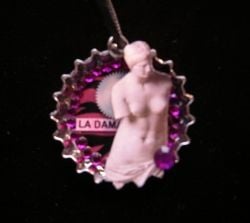
Collecting Jewelry Material
Findings, Beads, Pearls, Jewels, and "Junk" Jewelry Settings
Almost anything can be included in a collage. (Though if it gets very "thingy" it might turn into an assemblage.)
Anything that can be strongly adhered to the backing can be added to your collage jewelry. Flat-backed jewels, wired-on beads, flattish metal findings... all are possible additions to the paper that creates your collage.
This collage jewelry started with a faux silver bottle cap pendant (on super-duper sale) that already had some little jewels. I added the paper elements, a plastic gear from a defunct toy, and a larger, matching jewel.
Jewelry Findings
An assortment of fun things to work into collage jewelry. Handmade glass beads look terrific dangling, charms can collage right on in, and necklaces suspend your art round the patron's neck.
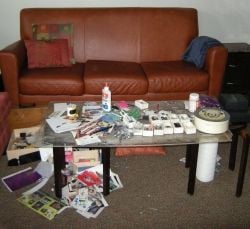
Setting Up Your Workstation
If you're going to create collage jewelry regularly, you'll need a dedicated work table with all your storage nearby.
I usually do my jewelry in binges though - several pieces at one time, then periods when I do other things - so I prefer to devote my serious work surface to those "other things" and set up a temporary workbench for jewelry... oddly enough, this is usually facing the TV where there just happen to be favorite movies playing on DVD. What a strange coincidence!
For me collage works best if I keep the surface of my mind busy with something not-too-important and let my eyes and hands free-wheel. Then, as I get more involved in each composition, I pause the movie to think harder about where this developing theme seems to be leading me. But I save really engrossing or new-to-me films for during the boring stages of applying the many coats of sealer/varnish needed to protect the finished collage.
Because of this preference, I store all my collage-jewelry supplies in easy to carry containers: boxes and little suitcases mainly.
Temporary or permanent, any work station needs to be laid out like a jet fighter's cockpit: everything easy to see and in easy reach. You'll want the best lighting you can get.
I use a big sheet of plexiglass as desktop and cutting board. (In this photo it spans a couple stools, making a sit-on-the-floor desk.) On this go my scissors, Xacto knife, glue, and Modge Podge and/or acrylic gloss medium, and the papers I'm currently using. To each side of me and further away on the board go the boxes of papers and images and the small drawers of findings, beads, jewels, and jewelry bases. Don't forget paper towels in case of over-glueyness.
When I sit here (on comfy cushions) I can stretch my legs, sip my tea, watch my flicks, and reach everything I need for a several hour session of collage jewelry making.
Then the phone rings and I realize I forgot to bring that over.
Really Useful Goop
Modge Podge is useful both as a glue and as a glossy varnish. (Jewelry wants gloss!)
This stuff is easy to use, compatible with most papers, and pretty darn tough. (Not completely waterproof though, so don't wear collage jewelry in the shower, please.)
If you can't find it locally cheaper - order it. I wish I'd discovered this stuff years earlier.
Tools for Collage
This is not an art that requires much equipment... but get good scissors. Nothing is worse than nasty, blunt scissors tearing instead of cutting your paper. And an Xacto where scissors can't go. And you don't want to cut up the dining room table, right?
Jewelry Tools
As you start adding beads and jewels, start to modify the "found" jewelry settings that form the base of your collage work, or as you start to create your own bases... you're going to need a few real jeweler's tools.
This handy-dandy tool case contains the basics. Enough to help you do most things, at least until you decide to get seriously into silver crafting!
The "Eye" Pendant
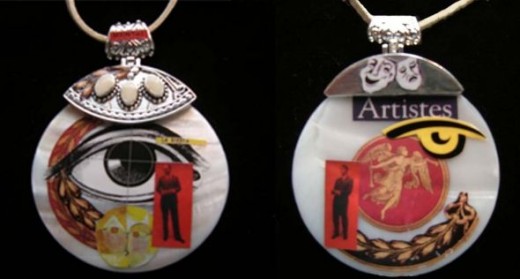
This pendant started with a "found" medallion of mother-of-pearl with silver colored metal hardware bought on super-sale. I added a cream colored leather thong (also with silver color fittings, not shown). Because the mother-of-pearl was so beautiful and rich, I decided from the first to leave a lot of it showing in the finished collage.
The collage composition started with the striking B&W eye... from an ad, I think. This came from my long-time accumulation of "found" images - some originally from magazines, others from catalogs, ads, fliers, soap wrappers, canned good labels, brochures, toy packaging, greeting cards, antique ephemera, damaged art books... anywhere!
As with any other time that you use an existing or "found" image, it's important to make sure that you use it in a "transformative" way, using it differently from its original use, changing the image it in major ways, reinterpreting its meaning, overlapping, cutting, warping, making it only a component part of a larger composition that carries your own, new artistic meanings. (Copyright issues are discussed further in a separate section.)
Here the context-less eye becomes the artist's eye, specifically seeing a man's figure. There's a fragment of a Klee painting - part of a face.
I always try to use the back or unseen side of a piece of jewelry to expand on the ideas of the front, visible, side. Here a classical flying figure - angel? muse? - and the word "artistes" kinda underline the Art idea.
Overall I liked the classical decoration (from the photo of a china plate) and the limited range of colors: Pompeian red, gold-to-yellow, mother-of-pearl white, and black. The finished pendant: severe, strong graphics, a bit weird.
"Found" Jewelry Bases
Of course, it'd be great if you created your own base for your collage... but I've found it a lot easier and faster to look for cheap ready-made jewelry that I can adapt. The "cheap" part is helped along by the fact that I can hide a Lot of ugly with the collage!
What I look for is a nice overall shape and weight, at least some area that is fairly flat (so much easier to lay paper on), and that whatever metal or stone etc. that I'll leave showing has some decent detailing. I leave a lot of good deals behind because the details of the metal work are coarse, crude, or just too ugly. Ideally, you want a bit of style that will showcase your collage and give it a finished, classy look.
Try shopping at discount costume jewelry places and craft supply stores - especially for sale and discontinued, discounted items. Look also at the jewelry counters of thrift stores, where - if you're lucky - you might find a distressed vintage piece you can adapt. (Don't mess up a good piece though.)
Here are a few I found on Amazon to give you the idea - for me, each of these inexpensive pieces has some potential.
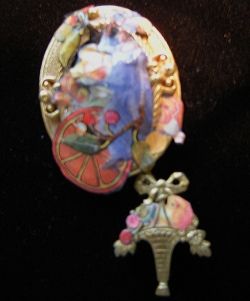
Collage-Jewelry Making Techniques
Generally, you want to let the nature of your "found" jewelry base suggest the nature of the collage it will showcase:- a bold setting demands a boldly designed collage, a delicate setting a more delicate design.
You might start with a single strong image or with a color scheme or with a wonderfully textured paper. Experiment with mini-compositions for a while before you glue anything down. One or two elements that repeat - especially between the back and front sides of, say, a pendant - will help tie your composition together. So will repeated colors or shapes.
When you're sure of your main design, start gluing, either with white glue or Modge Podge or, for heavy elements, even something like Gorilla or Super Glue. (Try not to over-weight your jewelry though.) Continue to add tiny details until - only until - the piece feels finished.
Then paint on thin layers of either Modge Podge or gloss acrylic varnish/medium. i'd suggest at least four layers and that you make sure that the edges of your paper are well sealed to the jewelry base. Add chains or leather or silk-cord necklaces last (so you don't get them sticky).
This photo (although not the sharpest, sigh) sorta shows the importance of the "found" jewelry base and of any findings or charms used. If you could hold it, you'd see the face of the fruit-seller, which is delicately drawn. This was an early piece and here I made the mistake of choosing too delicate of images - people have to get rudely close to your bosom to appreciate the art! - and of picking too curved a base - pictures apply easier to flatter surfaces. Let it be a lesson.

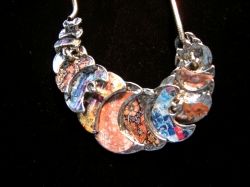
Making the "Matisse" Necklace
In this piece the colors came first, fragments of anything really: soap wrappers, catalog illustrations, an insurance company flier, a photo of a mosaic.
In searching through my "small" collage clippings box, I spotted the red-red-red Matisse dining room wallpaper with its lady. Naturally, this just had to be followed by the perfect-shade-of-purple other Mattise woman.
The underside of the necklace, with its oyster shell-like gnarly texture, seemed to demand darker or muted shades of the front's vibrant colors. Those paper fragments include more shards of mosaic and the flowers of William Morris wallpaper.
As usual in my work, I adhered the papers to the metal with ordinary white glue, let this dry, then finished the piece with four coats of Modge Podge, making sure to seal the edges of paper against their metal base.
(Side note: This necklace sold before I could even get it to the fund raiser!)
Collage Jewelry Book
This looks fascinating! More artists are using collage in jewelry than you'd expect... and for a wider range of effects and "looks" than even I would expect. (One of the interesting things about collage is how varied and personal this art of "found" materials can be.)
Books on Collage and Jewelry - (And both, together)
Books. Gotta love books.
Not Jewelry - Just Great Collage
I was lucky enough to see - years ago - a comprehensive exhibit of Romare Beardon's collage work at the Dallas Museum of Art. His approach was completely different from my own: I tend to use existing images and make them talk to each other, but this master of collage used paper fragments more like mosaic pieces to form larger pictures, while using occasional "found" images within his new picture.
Beautiful work.
I particularly liked the way he sanded down some of his papers to give them a soft effect rather like worn denim - adding a lot of depth and nuance to his colors and textures.
More Bearden Collages
The Amon Carter Museom of American Art in Fort Worth recently had a show on Romare Bearden's "Odyssey" collages. Beautiful!
- Design Diary Blog
Notes on the Romare Bearden "Odyssey" art show.
Links to More on Collage and Assemblage Jewelry
- A Pintrest on mixed media and collage jewelry
More assemblage than traditional paper collage, but some fun stuff.
Ahhh! Home at Last - A real, permanent paper-craft work space
Sometimes it'd be awfully nice for this messy craft to have a dedicated base station, ya know?
I really like the fold-away aspect of this one. It'd allow your extra room to actually double as a guest room when it needs to.
Latest Adventures in Collaging
Read all about my most recent glut of collage jewelry - made for a theater fund raiser. See an alternative version of the Matisse Necklace, one with a Persian theme. And coolo Bingo-card pins.
- DeVries Design Diary Blog
"Collaging for the Stage"
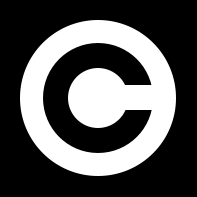
Copyright
Collage treads into some very gray territory of the copyright versus fair use wars.
COPYRIGHT: The simple version? You make it - you own that expression of the idea, though not the idea itself.
You don't need to register your creative work in any way - though it's a good idea. You don't need mystic symbols. Write the novel, draw the drawing and that expression is yours. But not forever. The length of time of copyright varies from country to country and with form of expression maybe, and some places don't recognize copyright, but them's the basics.
COLLAGE and COPYRIGHT : Ideally, in order to use an existing or "found" image, the collage artist ought to get written permission from the original artist or designer and - if this work was done for pay - from the client or present owner of that design, to be sure they have copyright permission.
Yeesh.
The concept of Fair-Use is supposed to protect an artist who uses the work of another in a "transformative" way. If your collage really changes and manipulates a "found" image, then that ought to be legal use (after all, you ARE transforming: you don't want to steal, you want to create, right?). But, in fact, in court, all this gets really complicated, messy, and expensive. Whether you use an image for profit is irrelevant BTW.
The safest course is to use only public domain images - where the original copyright has expired - or to create all your raw images yourself - take your own photos, create your own drawings. Use only copyright free or self-created images in your collages. My own feeling - and THIS IS NOT LEGAL ADVICE! - is that if images used in a physical collage are old, obscure, ephemeral, and/or merely documentary rather than "art" or proprietary, AND are really transformed in the collage process, AND are used in their original solo printed form (not copied before collaging or that collage used for multiple-copy art forms, like a poster), AND you sincerely believe you're following the spirit of copyright law, not plagiarizing... then I suspect no one's going to object. I always start by looking for public domain material; avoid art by living or recent artists; avoid photography unless it's public domain (photographers are very jealous of copyright!); and run run RUN away from any mega-corporate branded stuff defended by armies of lawyers... I doubt I'll ever collage a Mickey or a Barbie!
Before you get serious about doing much collage I recommend you explore copyright issues yourself and decide how you plan to work within the rules.
